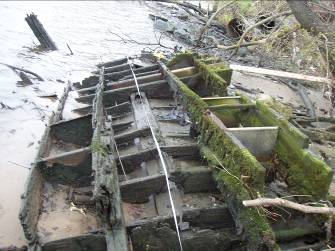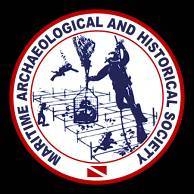Some reports suggest that Higgins sold early versions of these speedy boats to both smugglers racing whiskey past the Coast Guard
during Prohibition and to the Coast Guard who chased them.
The U.S. Navy did initially not express an interest in
the craft, in part because they viewed Higgins as an outsider working in direct competition with established shipyards on
the East Coast. Higgins eventually was able to deal directly with the Marines, for whom the craft were
designed and who saw the practical benefits of the vessel over existing designs.
|

|
MAHS first visited the Salisbury LCVP (18WC188) in February 2007, while documenting the
Upper Wicomico #1 Wreck, 18WC185.
We returned to the site in late November of 2007 at the invitation of Dr. Susan Langley, Underwater Archaeologist
for the State of Maryland, and again in April of 2008.
The remains of the boat lie at the base of the river bank, which
rises 10-12 feet above the bottom sediments in this location. The starboard side of the wreck rests on brush,
small trees, and trash that has collected in exposed tree roots. The port side is buried in the sediments.
|


